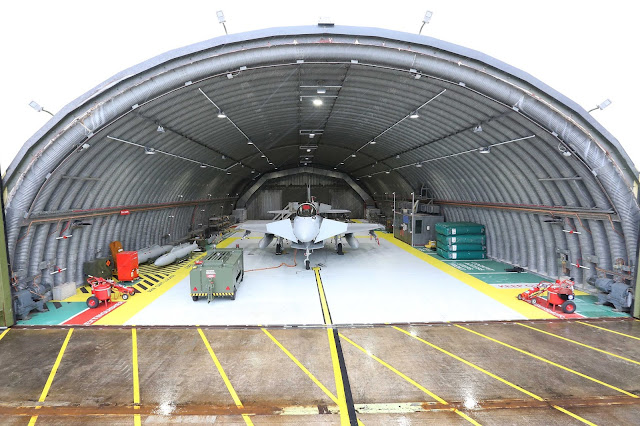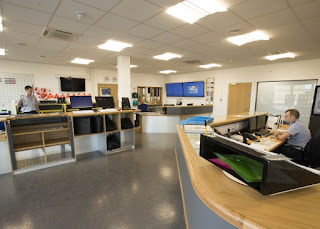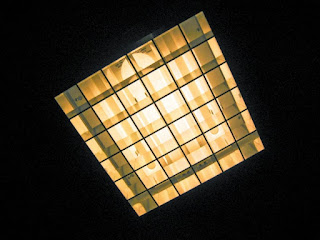TAG | led panels
13
80% of UK school kids ‘at flicker risk’ from old lights
Comments off · Posted by admin in LED, LED panels

Professor Wilkins says it’s ‘plain enough’ that bad flicker from magnetic ballasts in schools can impair learning. A switch to high frequency gear, or LED luminaires, would fix the problem.

Because of the way magnetic ballasts manipulate the 50 Hz sinusoidal waveform of the input voltage, they deliver a light output that flickers at 100 Hz. This frequency is in the danger zone of harmful flicker, which could impair learning.
‘Unfortunately 80 per cent of our schools are still lit with lighting that flickers at 100 hertz’, he told a Lux conference on lighting fixture design in London this month. ‘It causes headaches and its causes anxiety. It’s there all the time. Whether it impairs their learning, seems to me to be plain enough.’
Although people can only directly perceive fluctuations at frequencies up to about 70 Hz, human vision is adversely affected by light fluctuations up to 200 Hz. Visual performance is especially degraded by flicker in the 100 Hz to 200 Hz range and in general, younger people are likely to perceive lower level and higher frequency flicker than older observers.

Professor Arnold Wilkins says that 100 Hz is present all the time under magnetic ballasted fluorescent fittings in schools. ‘Whether it impairs their learning, seems to me to be plain enough’ he told the Lighting Fixture Design Conference in London.
‘100 hertz should be avoided.’ The solution is to upgrade to high frequency control gear for fluorescent or LED. ‘It’s a simple as that.’
Flicker at 100 Hz is prevalent in older fluorescent light fittings with magnetic ballasts which were popularly installed in schools before the introduction of high-frequency electronic control gear and LED panels. Typically, magnetically ballasted fluorescent luminaires will exhibit flicker of between 10 and 20 per cent of output, and a ‘compact flicker degree’, or CFD, of over 20 per cent. Prolonged exposure leads to eyestrain, headaches and anxiety.
Professor Wilkins has a number of high profile awards to his name, including the Leon Gaster Memorial Award, the Walsh Weston Memorial Award and the Owen Aves Medal and has been made a honorary fellow of the College of Optometry.
LED Ceiling panels are available from Novel Energy Lighting. We stock multiple quality brands, such as Thorn, Ansell, Philips, and MEGE:
flicker free · led 600x600 · LED Ceiling Panels · led flcker · led panels · low flicker · Novel Energy Lighting · school lighting
27
LED helps to make RAF more environmentally friendly
Comments off · Posted by admin in LED, LED panels
Despite facing severe budget restraints, a project has been delivered that is both energy efficient and sustainable and the RAF’s decision to use LED lighting, for one of first times on a new project, played an important role.
The building has been so well received within the defence community that it has been awarded the Ministry of Defence’s prestigious Sanctuary Award for Sustainability.
RAF Lossiemouth often bears the brunt of the West’s increasingly fractious relationship with Russia, with RAF Typhoon fighters being dispatched from the base on a regular basis to intercept Russian aircraft, which often play cat and mouse with Britain’s air defences. This means the base is constantly in use.
Sustainability was put at the heart of the project and energy efficiency was key. The new building and the refurbishment of the older buildings also had to be completed in a robust fashion, so as to ensure long, low-cost use.
In order achieve these aims, LED was quickly considered and pitched.
‘There were a number compelling reasons to change the lighting in the older facilities, principally because the buildings involved are used by the squadron 24 hours a day. But like any project that involves spending public money, it had to be justified,’ commented senior project manager at the Defence Infrastructure Organisation, Jim Ellistone , who worked on the project.
The new building would have a number of uses, requiring different levels of lighting. Besides the executive and administrative offices, the new headquarters building would provide a state of the art secure facility that would be used to plan and brief complex flying operations.
The building would also accommodates the Squadron’s engineering and logistics facilities and the Survival Equipment Section, which maintains all of the high tech equipment worn by Typhoon pilots during flight.
‘Everyone involved in the process quickly recognised the benefits of new lighting, the figures showed that, due to energy savings, the project would pay for itself in just over four years,’ Ellistone added.
In defence projects, the cheapest capital option is often used, due to the budget constraints that the MoD is placed under by the government of the day, however the benefits of LED were quickly provable to authorities.
‘This was an easy change to sell and was, in many ways, like pushing on an open door. The benefits of LED are now well established and we knew that a case for the technology had to be put forward at the first planning stage,’ Ellistone commented.
The highly intricate work that RAF engineers have to carry out on the Typhoon fighters, which are some of the RAF’s newest and most agile aircraft, means that excellent light quality is required. Such is the 24-hour nature of the base, repairs could be needed any time during the the day and night.
The aircraft are stored under concrete Cold War era Hardened Aircraft Shelters (HAS), which had not been internally upgraded since the days of Ronald Reagan and Mikhail Gorbachev. Energy efficient LEDs, offering the necessary light levels were installed as replacements to older models. LEDs were also used in the lines on the base’s concrete floor, which the aircraft use as guidance when they pull forward.
‘We had to be careful when specifying fixtures for the HAS, when the jet engines run in the hangers, fumes come from the wings and rise upwards,’ Ellistone said of the work. ‘We had to make sure, in these circumstances that the lights did not melt.’
The main squadron headquarters were delivered a month early, with a saving on the original tender target price of more than £1 million.
In reviewing the project on completion, the Combined Project Delivery Team came to the conclusion that a ‘real and deep sustainability gain’ was made by ‘stepping back’ to look at the fundamentals of what they were being asked to do.
This project is an example of reasoned arguments being used to build up a case for change and then, in timely fashion, a sustainable solution being agreed and delivered on time and within budget.
Visit www.novelenergylighting.com to explore our range of office and warehouse LED lighting, or call us today: 0208-540-8287
led hanger lighting · led high bays · led lighting · led office lighting · led panels · led tubes · led warehouse lighting · Novel Energy Lighting
Scientist who discovered human centric lighting shares tips with Lux. PLUS: Lighting based indoor positioning set to revolutionise US stores. AND: Health fears makes city think twice about LED. Lux Today 24 January 2017
human centric lighting · led office lighting · led panels · led tubes · lifi · light positioning · Novel Energy Lighting
14
School installs experimental lighting to improve grades
Comments off · Posted by admin in Uncategorized
An experimental human centric lighting scheme has been installed at Lindeborgskolan school in Malmo, Sweden, aimed at improving pupil performance.
The human centric system replaced a fluorescent lighting scheme, a change which pupils claim has improved their concentration, making them feel more alert throughout the school day.
The automatically changing light variation includes a period of intense rather blue light in the morning, to wake the pupils up, and a warmer light during other parts of the day.
Teachers are able to change the colour intensity of the lighting to create a calming or a stimulating atmosphere when necessary. The human centric scheme has also eradicated flicker.
The new lighting was funded by the Department of Internal Services in the hope of bringing Swedish schools firmly into the twenty first century.
You can find out more about the Malmo project by watching the video above. You can also learn more about the debate surrounding human centric lighting by reading our article: Are we experimenting on school children?
changing colour temeprature · controllable lighting · human centric lighting · led panels · led tubes · Novel Energy Lighting · school led · school lighting
A THIRD of Britain’s office workers hate their lighting, a study by the respected pollsters Ipsos has discovered.
Some 32 per cent of white-collar employees told the researchers that they were unhappy with the light intensity, with only a fifth were able to alter the light level.
The results are sure to bolster critics of the lit environment in the nation’s commercial workplaces, who have slammed the sector for a lack of creativity. Top lighting designer Paul Nulty, founder of Nulty+, tweeted: ‘Bad lighting effects workplace productivity. Who’d have thought!?’
UK offices still have a preponderance of so-called Category 2 lights – recessed, deeply-louvred fittings designed to minimise reflections on computer screens – which deliver a gloomy environment.
The study of over 12,000 workers across 17 countries showed that the UK workers are the least satisfied with their office ambience. The study appeared to add weight to the argument that local lighting control boosts employee engagement and satisfaction, as the biggest issue was a lack of control. Only 39 per cent of respondents say they can adjust the temperature, while a mere 21 per cent can alter the lighting.
The so-called Category 2 light fixture has long dominated the UK’s offices, but its deep louvres are no longer necessary to prevent reflections on computer screens. Picture: Andrew Malone
‘This could be seriously affecting the concentration, productivity and engagement levels of workers, with the study showing that a lack of flexibility and control over the physical work environment correlates with a lack of engagement’, the study said. In contrast, highly engaged employees are those that have the most flexibility over how and where they work.
The situation in the UK is likely to be influenced by the country’s dominance of open-plan design, with 49 per cent of workers based in this kind of space due to its cost-saving benefits. However, this can limit employees’ individual control over their environment.
Christine Congdon, director of Global Research Communication told Lux: ‘Our research has consistently shown that the most engaged workers are those who have autonomy over how and where they work, whether adjusting the temperature, lighting, or workspace to suit their needs. ‘When people feel like they have choice and control over various aspects of their physical work environment, it leads to greater satisfaction overall.
‘Everybody is different and personal preference will depend on an individual’s natural physiology, their mood on a particular day and the task they are working on. To cater to these constantly changing needs, employers should pay more attention to providing a range of working environments, including the ability to adjust workspace basics as required.’
The study was commissioned by office furniture manufacturer Steelcase.
Visit us at www.novelenergylighting.com to explore our range of office lighting products, including LED panels and LED tubes. Call us to discuss your needs: 0208-540-8287, or drop us an email: sales@novelenergylighting.com
Main picture copyright Ripton Scott 2016
commercial lighting · led panels · led tubes · Novel Energy Lighting · office compliant lighting · office led · office lighting · productivity lighting
8
Two-minute explainer: Lighting for the partially sighted
Comments off · Posted by admin in LED
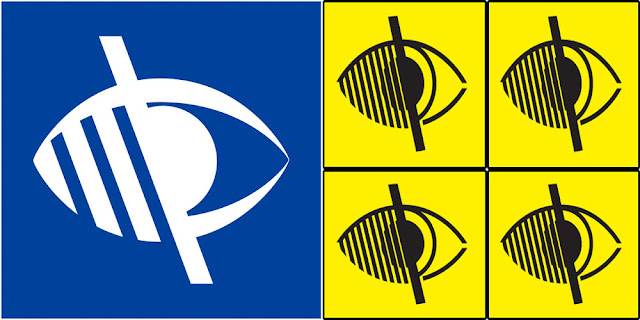 |
| Lighting can do a lot to assist partially sighted people. |
The Equality Act 2010 is intended to protect partially sighted people from unfair treatment in employment and when accessing public services. But what more can be done with light to make life a little more equable for those with disabilities? In particular, how can light be best utilised to benefit partially sighted people?
Colour Contrast
- Use colour to highlight differences between objects and surfaces, making it easier to negotiate a complex space. For example, in a white-tiled bathroom have the bathroom furniture in a different colour.
- Use different colours to highlight circulation routes from functional space (retail spaces, open-plan offices etc).
- Paint door frames a different colour to the doors and walls.
- Consider a different colour for door handles.
- Ensure that railings on stairs are a different colour to the walls, likewise the banisters.
- It is important to be able to pick out the edge of steps so use a contrasting strip or nosing.
- Glass doors and windows need to be visible, so consider the use of brightly coloured designs where vertical glazing is accessible to passers-by.
Lighting
- Increase light levels in areas such as stairs and level changes in areas like the kitchen and the bathrooms. There may be an aesthetic challenge in achieving this, but new low-energy LED sources can deliver high light levels from relatively small fixtures.
- Introduce additional light fixtures in areas where spatial definition is important.
- Make sure that light is in the places where it needs to be. Use the efficiency of localised lighting to assist in visual tasks, especially in places like kitchens and at work stations.
- Make the best use of natural light, but be aware of the potential problems that an over-bright blind can cause by ‘bleaching’ the rest of the surroundings.
- Make sure that any exterior lighting acts as a ‘way-marker’ as well as providing illumination. A line of light points can be more helpful than an illuminated pathway.
- Use light as a defining element in areas of the building where there are objects or furniture that protrude into circulation routes.
- Consider the impact of emergency lighting should the normal electrical supply fail. Escape lighting should assist in finding the route to safety for everyone.
The Equality Act 2010 requires employers to provide individual lighting provision to any employee requiring it.
Anyone registered as blind or partially-sighted automatically meets the Equality Act’s definition of a disabled person. Anyone with a sight loss that has a ‘substantial and long-term effect on your ability to carry out normal day-to-day activities’ may qualify for registration. In these circumstances, the requirements of the Equality Act 2010 must be met.
Credit: John Bullock, Lux
equality act 2010 · led lighting · led panels · lighting for partially sighted · Novel Energy Lighting · office lighting · partially sighted
 |
Elephants are causing serious headaches for farmers in India. |
 |
| Elephants have now started coming out of the forest throughout the year instead of only during harvest seasons. |
LED lighting is being inventively utilised in East India to prevent rampaging elephants from trampling farmer’s crops.
For months farmers in Odisha have been battling to prevent elephants from raiding vegetables, fruits and paddy. Miles of trenches and solar fencing have all failed to prevent the incursions, but now a newly installed low cost lighting system is showing signs of success.
Flashing LED lights suspended on bamboo poles have been installed at sixty metre intervals across forty-five acres of crops. The lights were placed so they would be at the elephant’s eye level, while being visible from a long distance.
Despite the fields being full of tomatoes, pumpkins and bananas, the elephants have opted to keep their distance from the illuminated crops.
‘The light system has been designed based on our field experience with elephants and their habits,’ Biswajit Mohanty, project director at the Wildlife Protection Society of India (WPSI) told The Hindu newspaper.
‘We knew that the elephants would be scared of flashing lights instead of fixed and powerful lights. We developed this design using low power LED bulbs used as strobes.’
The LED system was also used during the lucrative Indian mango season, which runs from April to June.
Hopefully the lights will be popular with farmers so that they can sleep peacefully instead of chasing elephants all night.
Biswajit Mohanty – The Wildlife Protection Society of India
‘I used to incur huge losses due to elephant herds entering my orchards and attacking mango trees,’ Odisha farmer Jugal Kishore Nayak told The Hindu. ‘But this year, the lighting system has kept the elephants at bay.’
The WPSI now plans to develop a prototype self-contained lighting unit, with an in-built solar charger, which will make the fixtures easier to maintain.
‘Hopefully the lights will be popular with farmers so that they can sleep peacefully instead of chasing elephants all night,’ Biswajit Mohanty concluded.
The Indian farmer’s elephant problem is much more serious than a few ravenous mammals stealing fruit and vegetables. Odisha has lost more than 700 elephants and 700 people during man-elephant conflicts since 2004. During the same period, elephants trampled ready-to-harvest crops across 90,000 acres of land.
The experiment assumes extra significance as elephants have now started coming out of the forest throughout the year instead of only during harvest seasons.
Visit www.novelenergylighting.com to purchase you elephant deterrent lighting today, or call Andy on 0208-540-8287 to discuss pachyderm prevention measures!
elephant deterrent · elephants · led in india · LED lamps · led lighting · led panels · led tubes · Novel Energy Lighting · pachyderm prevention
28
Government invests £5 million to help keep the lights on
Comments off · Posted by admin in LED, LED downlights, LED panels
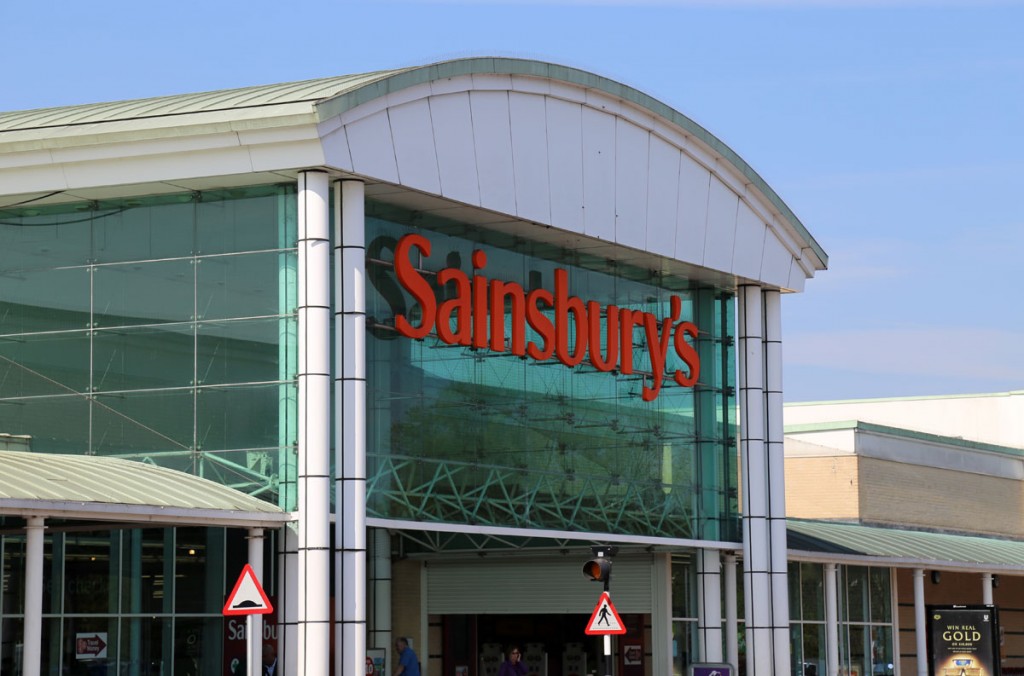
Sainsbury’s is one of a number of companies to bid for an Electricity Demand Reduction grant, as Whitehall eyes ways to keep the lights on in winter.
The Government is investing nearly £5 million to encourage leading UK firms such as Sainsbury’s, to install energy efficient lighting.
The money is part of an attempt by Whitehall to reduce peak time energy levels as fears rise that the National Grid will not be able to cope with electricity demands this winter, leading to nationwide blackouts.
A string of leading companies, including British Gas, Sainsbury’s, Sony and BAE Systems, have bid for funding in the second auction of the Electricity Demand Reduction (EDR) pilot.
Plumbing firm Wolseley UK received an EDR grant of £100k and is using the money to kit out its distribution centre with upgraded LED lighting.
The company claims that the new fixtures will reduce its electricity demand by 236,000 kWh, which is enough energy to power more than 300 homes.
Wolseley worked closely with Cloudfm on the maintenance work, a partnership that has also led to Wolseley’s head office in Leamington Spa being awarded a BREEAM “Excellent” rating.
The scheme works by encouraging consumers to provide capacity in the form of megawatts to help the UK meet its energy efficiency targets and reduce pressure on the National Grid. The pilot also reduces the energy bills of those involved.
The Government had originally allotted £6 million to the pilot, but a lack of uptake meant that not all the money was allocated.
This is the second time that an EDR auction has failed to reach its target, the first, held last year, saw only £1.28m out of a total of £10 million being snapped up.
edr · electricity demand reduction · energy reduction · LED downlights · LED lamps · led lighting · led panels · LED retrofit · led tubes · Novel Energy Lighting
10
Two-minute explainer: Tunable-white LEDs
Comments off · Posted by admin in LED, LED downlights, LED panels, LED Spots

Tunable-white lighting is one of the biggest trends in commercial lighting. LED developers have taken a serious grip on the photo-biological research being produced by university departments and other groups. We know more about the way that humans function than ever before and you might say that it’s fortunate for the LED community that the science appears to support a practical technology that is perfectly suited to LED exploitation.
Tunable whites use colour mixing
Standard LED colour-mixing uses red, green and blue channels that are adjusted to deliver the entire range of the colour spectrum. Tunable-whites work in the similar way, using of a number of controllable channels to adjust the colour temperature of the luminaire’s white light output. The channels in a tunable-white system all produce white light, but with varying colour temperatures, from a warm tone to a cool tone.
Inevitably, there are levels of sophistication involved in tunable-white systems and it’s vital that the specifier understands not only what is required from the lighting, but also what any particular system is capable of delivering.
Simple systems use two lines of LEDs
Take a warm white LED and sit it next to a cool white LED and cross-dim between the two. Job done? Well, not quite. It’s true that the cheapest tunable whites work in exactly this way. The most basic tunable linear systems use LED strips mounted side-by-side. One channel will be close to 2700K in colour temperature, with the other up around a cool 6000K. The LED strips are mounted inside an aluminium extrusion fitted with an opal diffuser, which does the colour mixing as the light passes through it. It’s very simple engineering but satisfies a basic market with low performance expectations.
Multi-chip versions do the mixing at chip level
More products are using ‘multi-chips’ where a number of tiny LED chips are combined into the same module. This means that the colour mixing occurs as the light leaves the module. Their very small size means that tunable-white products can be made much smaller, so we’re starting to see downlights using the technology as well as linear systems. These multi-chips tend to have a higher performance specification than the individual LED strips, but nothing should be left to chance.
Colour rendering can be compromised
A lot of fuss is made, quite rightly, over the way that white light presents surface colours. We’ve come to expect a good quality of colour rendering, regardless of light source. Tunable whites are not exempt from this issue but it’s not always clear from manufacturers’ data how well a system is performing.
Cheaper products may advertise good colour performance at the extremes of the tunable range, where light is being delivered from either the warm or the cool channel, but there’s no certainty that the mixed light performs equally well. Generally speaking, the greater the number of channels, and systems vary from two-channel to five-channel, the better colours will look under them.
Not all tunable-white systems cover the same colour range
If there is one aspect of tunable-whites that the specifier needs to take great care over, it’s the colour temperature range that’s on offer. While some systems offer a wide natural ‘circadian rhythm’ range that shifts from candlelight to daylight, there are other systems with a much smaller range, from 2500K to 4000K, which should only be considered as a decorative option.
There are three ways to control the tones
- The simplest systems use manual control to alter the white outputs. Expect to see a wall-mounted control panel or a hand-held remote control that enables you to adjust the colour of the light and the amount of light output. There is nothing scientific about this. It’s left entirely to personal preference, which may – or may not – be a good thing.
- Some tunable controls are designed to replicate the effect of dimming on a filament source, where two things happen at the same time. As the light output is dimmed, the lamp warms up in the same way as a traditional tungsten filament lamp. This is still a manual control method, but has the benefit of mimicking a filament light source. The tunable range tends to be very small, again mimicking the conventional tungsten lamp.
- More sophisticated control strategies are designed to manipulate the circadian rhythm of room occupants. This means that the lighting settings are programmed into the control architecture. Shifts in colour temperature and light level can be pre-set or can be instigated by a manual over-ride. This is the method that’s being used in recent school installations in Scandinavia.
Three discrete channels could be a solution
It’s been pointed out that not all ‘tunable-white’ mixing requires a full colour range. Complex tunable-white schemes mean that you should be able to call up any colour temperature within the mixing range. But some clients will call for specific colour temperatures, often those that are commercially available, such as 3000K, 4000K, 6500K. If that’s the case, then it may be simpler – and cheaper – to consider having three discrete lighting channels operating separately within a bespoke housing.
Photo credit: Glamox Luxo
colour temperature · LED downlights · led lighting · led panels · Novel Energy Lighting · school lighting · tunable light · tunable wite light
29
Introducing the new LED Beta Panel from Thorn Lighting
Comments off · Posted by admin in LED, LED panels
Introducing the new Beta Panel
Beta Panel from Thorn is a recessed LED luminaire with high efficacy (94Llm/W) for high energy savings and provides 11 years of useful light, if on 12 hours per day (50 000 hours) and a 5 year warranty.
With seamless corners and a slim design Beta Panel has a sleek appearance. The luminaire provides a light output of over 3 200 lumens and it is available with a colour temperature of 4000K providing an exact colour match to fluorescent and a colour rendering index (CRI) up to 80.
Application areas for Beta Panel are general illumination as well as corridors and circulation areas. It offers an easy retrofit solution for luminaires with conventional light sources (4x18W T26) and is suitable for installation in T-grid ceilings. In addition, the slim profile makes it suitable for installation in small ceiling void and can be surface mounted or plasterboard recessed (using an additional accessory).
In stock and available from Novel Energy Lighting, click here for details on the product:
Call us for volume pricing: 0208-540-8287, or email for further details: sales@novelenergylighting.com
beta led panel · LED Ceiling Panel · led lighting · led panels · Novel Energy Lighting · thorn beta panel · thorn led · thorn lighting · thorn omega · thorn panel

